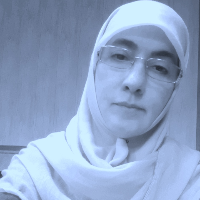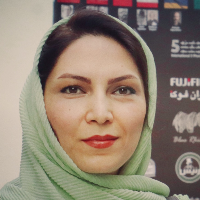A Narrative of the Contrast between Photography and Painting with an Approach towards the Views of Walter Benjamin
Author(s):
Article Type:
Research/Original Article (دارای رتبه معتبر)
Abstract:
Certain vicissitudes are generated in the relations between photography and painting by the artists and theoreticians in their investigations about photography and its interplay with the art of painting. Early during the advent of photography, no artistic value was attached to the photographs insofar as it managed to find a home among the rest of the arts, and a long way was taken to attach an artistic value to the photographs in the courts of justice. Nonetheless, painting always predominated as fine art and a symbol of wealth, culture, and civilization. Primarily, a periodical journal printed Gustave Le Gray’s photographs entitling them as artistic pictures. Photography gradually adopted an artistic language and expression, such that today it holds a critical role in modern arts, especially land art and installations.This paper mainly seeks to investigate the course of development in the position of photography and its rivalry with painting and even its access to progressive art with a new language and expression. The main question about the position of photography versus painting is on its invention until the modern era and post-modern art. We attempt to examine what new frontiers the historical race between photography and painting artists are introduced in contemporary art. The present paper attempts to examine the position of photography in the art, and evaluate its status in reciprocity or competition versus painting by making references to the works of the artists up until the contemporary era, with an approach towards the views of the twentieth-century theoretician – Walter Benjamin (1892-1940) – about the reproducibility of artworks. Apparently, due to its flexible character and since it creates innovation, photography is turned reproducible and into a new instrument in postmodern art, such that it could be regarded as a separate art with a novel expression and as the establisher of many art styles.Since its advent, triggered by Louis-Jacques-Mandé Daguerre (1787-1851) in 1839, photography entered a special rivalry with painting, which has been marked by many of the philosophy theoreticians, since this visual medium or art is way too occult and constantly separating itself from the rest of the arts and outreaching them as the most important medium of expressing artistic concerns. Some artists regard photography as being specific to a certain group. However, since the advent of photography in the nineteenth century, it turned more popular and accessible than painting, meaning that many walks of people could make a self-portrait in the photo studios. Yet, painting art was still in use and accessible by the better-to-do class of society. On the other hand, many painting artists including Charles Negre (1820-1880) and Edgar Degas (1834-1917) used photographs in their paintings. This made photographers such as Edward Steichen (1879-1973) and advocates of pictorialism liken their photographs to the romantic and sometimes imaginary atmosphere of paintings to produce an identity for their works and getting them closer to the world of art.Lewis Frederick Meyer (1822-1913) and Pierre-Louis Pierson (1822-1913) were two photographers who left a significant impact on the process of turning photography into art since they accused some photographers of stealing their photographs. In that period, copyright laws were enforceable only to works of art. Therefore, it had to be proven in the court of law that photography is an art. At last, the French court ratified that photography is entitled to the same rights attributed to a work of art like painting. Pierson and Meyer published the book “Photography” to consolidate the position of photography among the rest of the arts. According to them, photography stopped groundless and uncreative painters working.Therefore, the present paper reviews the history of photography and the advent of various photography schools inspired by the painting schools and vice versa, examining the course of evolution and interplay of these two arts. From among the various views of the painting or photography artists and the relevant theoreticians, Walter Benjamin speaks seriously and severally about the newly emerging arts of his time – photography and cinema – in an essay titled “The Work of Art in the Age of Mechanical Reproduction”. In this essay, he investigates the power of reproduction in the modern age and enumerates its impacts on the arts and the popular masses. More than any other art, the power of photography and reproducibility of photographic images, attracts attention in this context. In Benjamin’s opinion, works of art have always been reproducible. “Everyone can copy works of others”. In his opinion, photography has altered the substance of art.In part seven of his essay, he explicitly emphasizes the historical disputes as to the reciprocity or competition between painting and photography, dubbing it as “devious and confused”. He believes that this dispute is a historical transformation the universal impact of which was not realized by either of the rivals (Benjamin, 1998: 216). Today, the impact of photography on the contemporary arts – some of which we have laid down in this paper – is evident to all, and it has further increased despite the technological changes.Since late in the 1970s, the work of the postmodern photographer - Cindy Sherman – called “Untitled Film Stills” (1954), and Andy Warhol’s “The Death and Disaster” painting silk-screens from 1963 to 1964 made the critiques and artists pay attention to photography as a media element in the contemporary life. In the 1970s, photography was used as a medium in many contemporary art styles, especially in the works of land art and its various principles. On the other hand, photographers also independently tried to get attuned to the postmodern artistic values - especially in the topic of the environment – by the realization or documentation of their surroundings. Modern topography images are included in the category. The impression and impressionability between photography and painting in their various styles are manifested in the works of photographers and painters, insofar as photography leaves effect in creating an artistic style like photorealism as an independent and powerful medium according to Edward Lucie-Smith as he has conceived in his book “The Globalization and the Modern Art”.In response to the study of these two arts’ position, and considering the views of Benjamin and the artistic styles emerged especially in the postmodern era, it seems that we would arrive at the answer that photography may hold a significant role in the postmodernist art by its capability of dynamism and universalism. Walter Benjamin’s views explain the importance of photography during the age of mechanical reproduction or duplication among the popular masses and its increasing role in rivaling painting in contemporary art, pointing out the extinction of originality in the art. Photography is an art that impacts other arts every day, especially in the postmodern era, and is an inseparable part of postmodern art, since splendid artworks may be created even out of the cheapest photographs, referring to the works of painters like Gerhard Richter (1932). As Walter Benjamin maintains, photography universalized the art and brought artists a novel attitude based on which one may say the art has rerouted from the concepts of originality and specialty and belonging to a certain class of the society to the direction of popularity and accommodation to the popular masses. It seems by analyzing his views that Walter Benjamin does not look at photography as something void of art, but he regards its universality as a forerunner for its artistic application. More specifically, he points to the works of Eugène Atget (1857-1927) – the nineteenth-century French photographer – who has reduced the last of the cult values of the photographs - the human portrait - and has increased its exhibitory value by taking photographs of deserted urban spaces with no human portraits and figures (Benjamin, 1998: 215). Indeed, it seems that Benjamin thinks more about the importance of the invention of photography and its impact on art and its impression on the value of art in the eyes of the popular masses. Today, the impact of photography on the contemporary arts is publicly evident and has increased more than ever despite technological changes. In Benjamin’s view, the art has lost its sanctity due to the technological advancement of photography alongside the loss of the sacred undertone of the photographs, gradually becoming accessible by the popular masses. In other words, photography has been effective in the loss of the personification undertone as an instrument of the mechanical age of artistic reproduction.Aside from Benjamin’s views, one may depict that photography worked like a catalyst in its age and managed to bring about abundant changes in the attitudes of the painters and painting art styles. It managed to dissolve and attach the antagonists to itself. Precision in details and shooting the seconds or “capturing the moments” with the help of light is a possibility painting has never been able to take benefit of in picturing the imagination, but using photography. The sanctity of the moment in daily life is undoubtedly precious, and shooting it and eternizing “a moment” that no more exists is way too valuable, and this amazing thing is difficult to be done without the medium of photography.
Keywords:
Language:
Persian
Published:
Journal of Graphic Arts and Painting, Volume:3 Issue: 5, 2021
Pages:
4 to 18
magiran.com/p2375368
دانلود و مطالعه متن این مقاله با یکی از روشهای زیر امکان پذیر است:
اشتراک شخصی
با عضویت و پرداخت آنلاین حق اشتراک یکساله به مبلغ 1,390,000ريال میتوانید 70 عنوان مطلب دانلود کنید!
اشتراک سازمانی
به کتابخانه دانشگاه یا محل کار خود پیشنهاد کنید تا اشتراک سازمانی این پایگاه را برای دسترسی نامحدود همه کاربران به متن مطالب تهیه نمایند!
توجه!
- حق عضویت دریافتی صرف حمایت از نشریات عضو و نگهداری، تکمیل و توسعه مگیران میشود.
- پرداخت حق اشتراک و دانلود مقالات اجازه بازنشر آن در سایر رسانههای چاپی و دیجیتال را به کاربر نمیدهد.
In order to view content subscription is required
Personal subscription
Subscribe magiran.com for 70 € euros via PayPal and download 70 articles during a year.
Organization subscription
Please contact us to subscribe your university or library for unlimited access!




